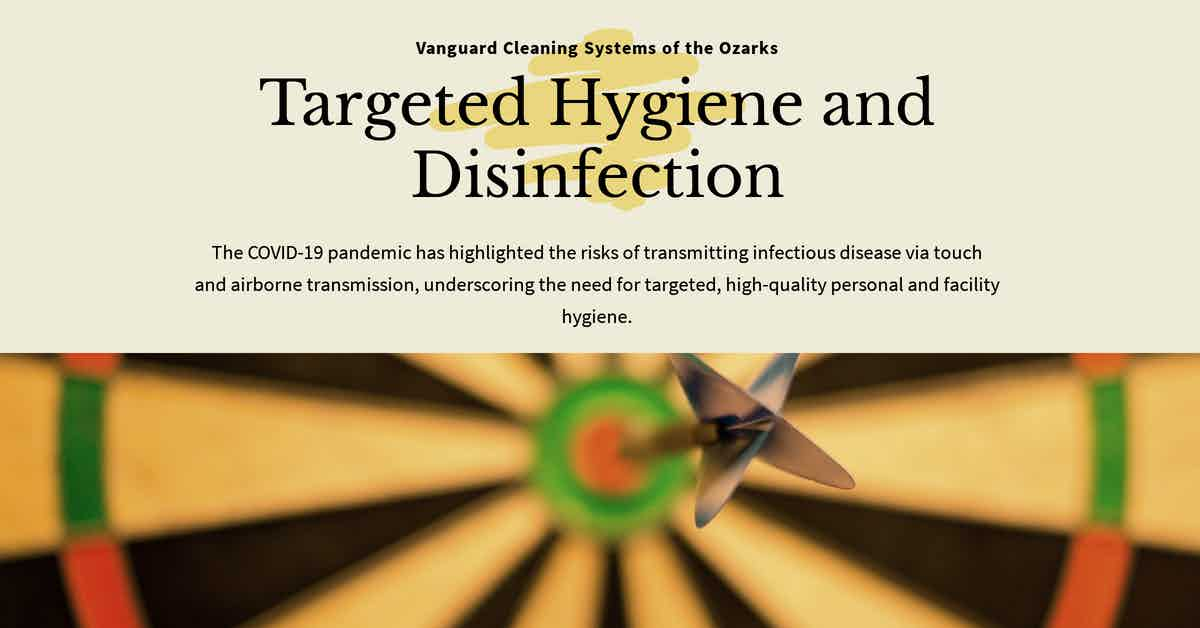The COVID-19 pandemic has highlighted the risks of transmitting infectious disease via touch and airborne transmission, underscoring the need for targeted, high-quality personal and facility hygiene.

Breaking the Chain of Infection Via Targeted Hygiene and Disinfection
Humans will never eradicate bacteria and germs--there are far too many, with more spreading every day.
How many?
Current estimates of viruses in just the oceans are believed to outnumber the stars in the sky, and modern science estimates a human body could be home to more than 30 trillion non-human microbe cells.
According to Air & Space Magazine;
It is estimated that there are 10 viruses for every bacterium on Earth.
Curtis Suttle from the University of British Columbia in Vancouver compared the number of viruses in the oceans alone to the number of stars in the Universe, which is estimated to be 1023.
Viruses outnumber stars by a factor of 10 million.
If you lined them all up, that line would be 10 million light-years long!
To put it on a more conceivable scale, it’s been estimated that each day, more than 700 million viruses, mainly of marine origin, are deposited from Earth’s atmosphere onto every square meter of our planet’s surface.
There Are More Viruses on Earth Than There Are Stars in the Universe
Further, according to an article on Science Alert reviewing an essay published to PLOS One;
[...] a team of biologists led by Ron Milo from the Weizmann Institute of Science set out to review all the available literature on the microbe populations that live inside us.
They found that for a man between 20 and 30 years old, with a weight of about 70 kg (154 pounds) and a height of 170 cm (about 5'7) - they call him the 'reference man' - there would be about 39 trillion bacterial cells living among 30 trillion human cells.
This gives us a ratio of about 1.3:1 - almost equal parts human to microbe.
Given those staggering numbers, breaking the chain of infection by killing germs and bacteria must appear impossible.
However, a critical assessment of where and how most germs and illness-causing bacteria are spread provides crucial insight into how the transmission chain can be broken.
Understanding the Chain of Infection
To understand how the chain of infection can be broken, you must first understand the six primary links in the chain.
- Pathogen - Viruses, bacteria, fungi, parasitic protozoan diseases, and prions.
- Reservoir - The primary habitat of the pathogen, including human, insect, animal, and environmental.
- Portal of Exit - Vomiting, diarrhea, bites, sexual transmission, skin-to-skin, coughing, sneezing, or talking, and from mother to fetus.
- Mode of Transmission - Direct, such as STDs and respiratory illnesses, and indirect, such as insect bites or contact with inanimate objects.
- Portal of Entry - Inhalation, ingestion, absorption, inoculation, and introduction via a medical device.
- Susceptible Host - Vulnerable demographics, most commonly a product of age, hydration, nutrition, pre-existing medical conditions, immobility, immunosuppressant medication, and natural general defense factors such as mucous membranes, cough reflex, and skin conditions.
Targeted hygiene and disinfection services focus on disrupting the chain of infection at the point of transmission.
Targeted Disinfection Services
Targeted disinfection services focus on disrupting the infection chain at the transmission point by killing germs, bacteria, fungi, and other pathogens on commonly touched surfaces.
There is no one-size-fits-all solution.
The key to success is understanding what type of microbe you are combatting and how the disinfectant product being employed affects it on the specific surface being sanitized.
For example, dwell times for killing E.coli instead of SARS-CoV-2 will likely vary with the same disinfectant product on the same surface.
Additionally, the residual efficacy of disinfectant products is only recognized by the U.S. Environmental Protection Agency against bacteria, not viruses.
So, when a person touches a surface or re-enters a room, it should be considered recontaminated regardless of how long ago it was disinfected.
Further, to ensure maximum disinfectant effectiveness, surfaces must be cleaned routinely with soap and water to remove soil, dirt, and other matter that impairs disinfectant dwell time and surface coverage.
Documentation regarding the most germ-covered surfaces varies from study to study.
The most commonly cited areas include:
- Door handles on primary entrances and exits.
- Horizontal surfaces in office break rooms.
- Sink faucet handles in public kitchens, break rooms, and restrooms.
- Elevator buttons.
- Stairwell rails.
- Electronic equipment--phones, keyboards, mice, and touchscreen devices.
- Gas pumps.
- ATMs.
- Money.
- Grocery carts.
- Soap dispensers.
- Condiment dispensers, and;
- Resturant menus and tables.
Targeted Hygiene
Disrupting the infection chain with targeted surface disinfection is only half the equation.
The other half requires stringent adherence to proven hand hygiene practices that remove or kill germs and bacteria on carrier hands before they are passed on to other surfaces, other potentially susceptible hosts, or are inhaled, ingested, or absorbed by the carrier.
The key to success with targeted hygiene is to wash your hands at critical moments--before or after specific activities--which studies have shown strongly correlate to high levels of germ and bacteria transmission, specifically:
- After touching common surfaces/germ hotspots.
- After coughing, sneezing, or blowing your nose.
- Returning to and leaving your workspace.
- Before and after preparing food.
- Before and after eating.
- After using the restroom.
- Before entering and after exiting a public facility, and;
- After disposing of garbage.
References & Resources
- What are the 6 links in the chain of infection?
- The Top 10 Germiest Public Places And Objects
- Targeted Hygiene
Takeaway
Targeting specific surfaces with scientifically proven cleaning and disinfection practices combined with washing and disinfecting your hands at critical moments during the day is a proven method for breaking the chain of infection, the spread of deadly diseases, and improve the health and wellness of the worldwide population.
Implementing these programs is not only cost-effective, but they correspond directly to increased occupant satisfaction and performance, which means increased profits, better grades, and a stronger future outlook.
Outsourcing is a proven method for rapidly onboarding enhanced cleaning and targeted disinfection services at a flat rate without the frustration of managing and training a qualified team in-house.
Contact us today and discover why Vanguard Cleaning Systems® is the Standard of Clean® for businesses throughout Northwest Arkansas, Missouri, and Oklahoma.
In Oklahoma, dial 918-960-4450
In Arkansas, dial 479-717-2410
In Missouri, dial 417-812-9777

